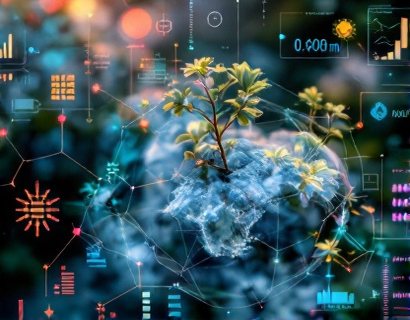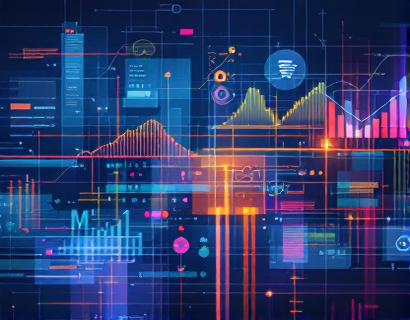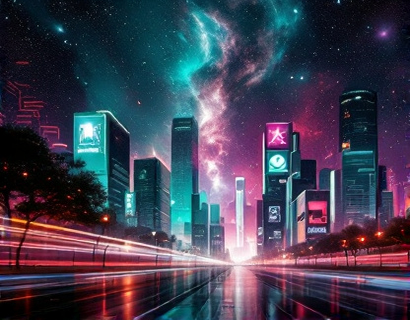NFTs: Empowering Creators and Collectors in the Digital Age
In the rapidly evolving digital landscape, Non-Fungible Tokens (NFTs) have emerged as a transformative force, redefining the way creators and collectors interact with digital assets. This innovative technology leverages blockchain to establish unique digital ownership, offering a new paradigm for creativity, trade, and management of digital content. The rise of NFTs is not just a trend but a significant shift in the digital economy, providing unprecedented opportunities for artists, collectors, and enthusiasts alike.
The Fundamentals of NFTs
To understand the impact of NFTs, it's essential to grasp the basics of this technology. Unlike cryptocurrencies such as Bitcoin or Ethereum, which are fungible and interchangeable, NFTs are unique and cannot be exchanged on a one-to-one basis. Each NFT represents a distinct digital asset, such as a piece of art, a video, a collectible, or even a piece of music. This uniqueness is encoded into the token's metadata, ensuring that no two NFTs are identical.
The underlying technology behind NFTs is blockchain, a decentralized and transparent ledger that records transactions across multiple computers. This ensures the authenticity and ownership of digital assets, addressing long-standing issues of piracy and unauthorized reproduction. The use of smart contracts on blockchain platforms like Ethereum further enhances the functionality of NFTs, automating and securing the transfer of ownership and rights.
Empowering Creators
One of the most significant advantages of NFTs is their ability to empower creators. In the traditional art market, creators often struggle to monetize their digital work due to the ease of replication and distribution. NFTs change this dynamic by allowing artists to sell their digital creations as unique, verifiable, and scarce items. This not only provides a new revenue stream but also gives creators greater control over their work and how it is used.
For instance, an artist can mint an NFT of a digital painting and sell it directly to a collector, receiving a percentage of any future resales through smart contract provisions known as royalties. This feature ensures that creators continue to benefit from the value their work generates, even after the initial sale. Moreover, NFTs enable artists to build a direct relationship with their audience, fostering a community around their work and enhancing their brand.
Enhancing Collector Experiences
Collectors, too, stand to gain significantly from the NFT ecosystem. The ability to own and trade unique digital assets opens up a world of possibilities. Collectors can curate digital collections that are as valuable and prestigious as their physical counterparts. The scarcity and uniqueness of NFTs add a layer of exclusivity, making digital collectibles highly sought after.
Furthermore, the transparency and security provided by blockchain technology give collectors confidence in the authenticity and ownership of their digital assets. They can verify the history and provenance of an NFT, ensuring that they are purchasing genuine items. This level of assurance is particularly important in a market where digital goods can be easily duplicated.
Building a Dynamic Community
The NFT ecosystem is not just about transactions; it's about fostering a vibrant community of creators and collectors. Platforms built on NFT technology often include features that facilitate interaction, collaboration, and engagement. Forums, marketplaces, and social spaces allow users to connect, share ideas, and showcase their work. This community aspect is crucial for the growth and sustainability of the NFT market.
Events and challenges within these communities can further enhance user engagement. For example, virtual art exhibitions, auctions, and limited-time drops create a sense of urgency and excitement, driving participation and interest. These activities not only benefit the participants but also contribute to the overall health and vibrancy of the ecosystem.
Innovative Solutions for Ucosystem Enhancement
To fully realize the potential of NFTs, it's essential to develop innovative solutions that enhance the ecosystem. One such solution is the integration of advanced tools for content creation and management. These tools can help creators produce high-quality digital assets with ease, reducing the technical barriers to entry. Features like customizable templates, drag-and-drop interfaces, and AI-assisted design can democratize the creation process, allowing more people to participate in the NFT space.
Another critical area is the development of user-friendly marketplaces that streamline the buying and selling of NFTs. These platforms should offer intuitive navigation, robust search functionalities, and secure transaction processes. Additionally, incorporating features like price alerts, collection management, and personalized recommendations can enhance the user experience and increase engagement.
Ulevating Digital Presence
For both creators and collectors, elevating their digital presence is a key objective in the NFT space. A strong online presence can lead to greater visibility, more opportunities, and a larger audience. Platforms can support this by providing built-in marketing tools and social media integrations. For instance, creators can share their NFTs directly on popular social networks, reaching a broader audience with minimal effort.
Moreover, the use of blockchain-based reputation systems can help establish credibility and trust within the community. By tracking and showcasing an individual's contributions, achievements, and engagement levels, these systems can enhance the reputation of creators and collectors, making it easier for them to attract buyers and collaborators.
Challenges and Considerations
While the potential of NFTs is vast, there are several challenges and considerations that need to be addressed. One of the primary concerns is the environmental impact of blockchain technology, particularly proof-of-work (PoW) consensus mechanisms used by some blockchains. The high energy consumption associated with PoW has led to calls for more sustainable alternatives, such as proof-of-stake (PoS) or other eco-friendly consensus models.
Another challenge is the regulatory landscape. As NFTs gain mainstream attention, governments and regulatory bodies are beginning to take notice, leading to questions about taxation, intellectual property rights, and consumer protection. Creators and collectors must stay informed about these developments to navigate the legal aspects of the NFT market effectively.
Future Prospects
The future of NFTs looks promising, with ongoing innovations and expanding use cases. Beyond art and collectibles, NFTs are finding applications in gaming, virtual real estate, and even identity verification. The interoperability of different blockchain platforms is also being explored, allowing NFTs to be used across various ecosystems, further enhancing their utility and value.
As the technology matures, we can expect to see more sophisticated features and broader adoption. The integration of NFTs with other emerging technologies, such as augmented reality (AR) and virtual reality (VR), could create immersive experiences that redefine how we interact with digital content. The potential for NFTs to transform industries and create new economic models is immense, making this an exciting time for all stakeholders.
Conclusion
In conclusion, NFTs are revolutionizing the digital age by empowering creators and collectors with innovative solutions for managing and trading unique digital assets. The combination of blockchain technology, smart contracts, and community-driven platforms is creating a dynamic and inclusive ecosystem. While challenges remain, the future of NFTs holds tremendous promise, offering endless possibilities for those passionate about the digital frontier. By embracing this technology, creators and collectors can elevate their digital presence and participate in a new era of creativity and ownership.










































